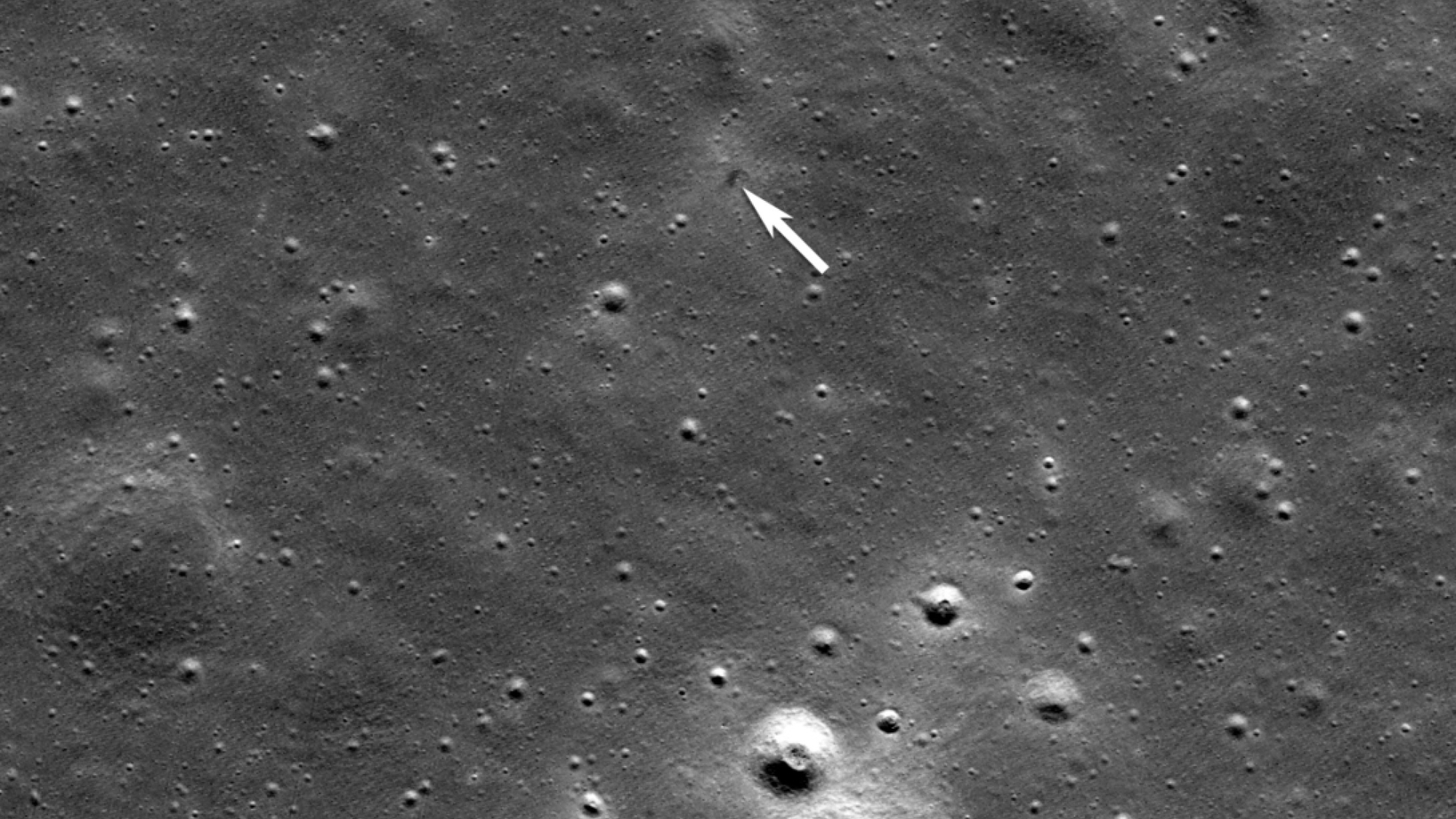A tiny glass bead from the moon offers clues to its hidden interior
"This is a big step forward in understanding how the moon evolved internally."

A tiny glass bead retrieved by China's Chang'e-5 lunar mission is offering scientists a glimpse into the moon's hidden depths and providing insight into the violent forces that helped shape the cratered landscape.
The bead, just a fraction of an inch wide, was among the 3.7-pound (1.7-kilogram) cache of rock and soil collected by the Chang'e-5 lander in 2020 from Oceanus Procellarum, or the "Ocean of Storms," a vast lava plain on the moon's near side.
Scientists analyzing the samples have identified the glass bead as a remnant of high-temperature lunar activity dating back to roughly 68 million years ago. What sets the bead apart is its unusual chemistry: it's exceptionally rich in magnesium oxide, in stark contrast to the volcanic rocks that dominate the region, a team of scientists led by Chen-Long Ding of Nanjing University in China report in a new study.
The findings suggest the bead likely formed from material excavated by a massive asteroid impact — possibly one that struck the moon with enough force to unearth rock from the upper mantle and fling it to the surface.
"This is a big step forward in understanding how the moon evolved internally," Tim Johnson, a professor of geology at Curtin University in Australia and a co-author of the new study, said in a statement. "If these samples really are pieces of the mantle, it tells us that impacts can excavate otherwise inaccessible mantle material to the surface."
The plateau surrounding Chang'e-5's landing site is dotted with over 100,000 craters larger than 328 feet (100 meters) in size, making it a challenge for scientists to match glass droplets with their specific crater of origin.
One particularly compelling theory links the bead's origin to the nearby Imbrium Basin, a massive impact site that formed nearly 4 billion years ago. Remote sensing has shown the area around the basin's edge contains minerals that match the chemical signature of the glass bead.
Breaking space news, the latest updates on rocket launches, skywatching events and more!
That basin's formation — one of the most cataclysmic in the moon's history — may have punched deep into the lunar crust, excavating material from the upper mantle and scattering it across the surface, including the area later sampled by the Chang'e-5 mission. Billions of years later, a smaller impact — occurring around 68 million years ago — likely struck this area again, re-melting some of that ancient, mantle-derived debris. The intense heat from this second collision fused the material into glass, forming glass beads like the one studied.
"This is exciting, because we've never sampled the mantle directly before," Alexander Nemchin, a professor of applied geology at Curtin University said in the same statement. "The tiny glass beads offer us a glimpse of the moon's hidden interior."
China recently opened access to its Chang'e-5 lunar samples, which are the first to be brought to Earth since the Soviet Union's Luna 24 mission in 1976. Seven institutions across six countries have been loaned small portions of the material, including two in the U.S. and one each in France, Germany, Japan and Pakistan.
Chinese researchers, in collaboration with international teams, have already made several discoveries from the samples, including the surprising finding that the material is much younger than that from the Apollo missions, suggesting volcanic activity on the moon occurred as recently as 120 million years ago. This raises the question of what fueled the volcanism in the absence of water and hot radioactive elements to generate subsurface magma. Foreign scientists now receiving samples are optimistic their specialized equipment will help answer this and other lunar mysteries.
"We look forward to scientists worldwide making more scientific discoveries, jointly expanding human knowledge and benefiting all of humanity," Shan Zhongde, head of the Chinese Space Agency, said on April 24 at a ceremony in Shanghai celebrating China's annual Space Day.
This research is described in a paper published May 9 in the journal Science Advances.
Join our Space Forums to keep talking space on the latest missions, night sky and more! And if you have a news tip, correction or comment, let us know at: community@space.com.

Sharmila Kuthunur is a Seattle-based science journalist focusing on astronomy and space exploration. Her work has also appeared in Scientific American, Astronomy and Live Science, among other publications. She has earned a master's degree in journalism from Northeastern University in Boston. Follow her on BlueSky @skuthunur.bsky.social
You must confirm your public display name before commenting
Please logout and then login again, you will then be prompted to enter your display name.
